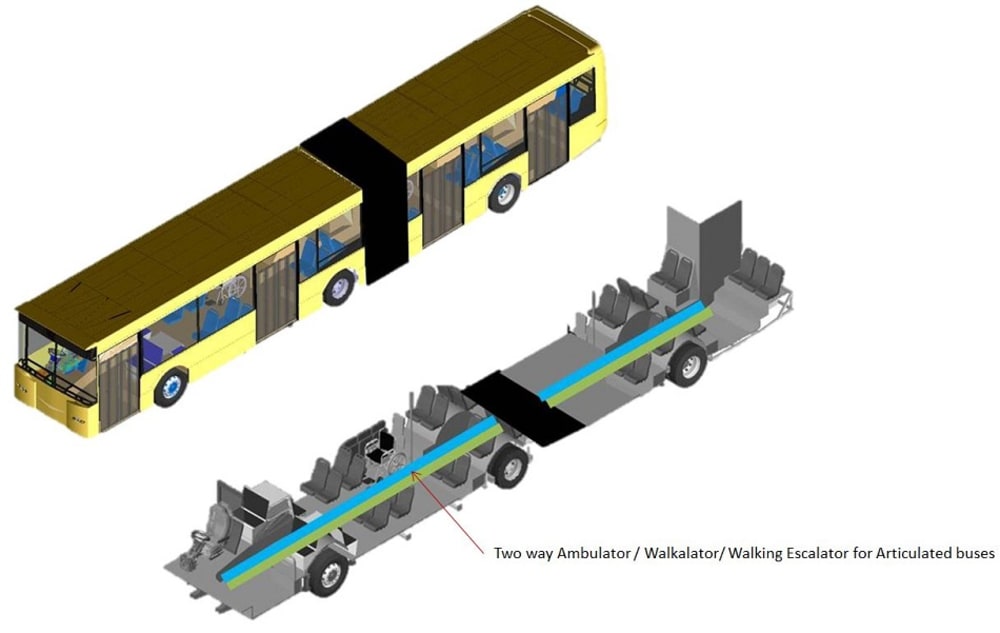There has been significant reliance of people on public transport across world of late, Increased reliance would mean a lot to be offered by the transport authorities and the OE manufacturers in terms of the passenger comfort, it becomes challenge though as on one side Passenger comfort is to be given importance and on the other side maximizing the occupancy or other aids for the operator.
As mentioned above passenger comfort has been of utmost importance and this doesn’t confine to be resting on the seat or to travel in the bus, it also has a lot to do with boarding and alighting the bus. For passenger this would mean the ease with which he negotiates the maneuver and for the operator it would mean the reduction in dwell time, thereby saving on the idle fuel consumption as well as increasing the number of trips.
The entry in the Buses/Coaches & also inside other compartments or decks in bus is conventionally done by stairs. It is being attempted here to reduce the effort of the passengers making an entry into the bus by providing automated entrances. The invention aims at reducing the effort, the passenger has to exert while boarding and alighting the bus, with the legislative norms of the motor vehicles getting customer friendly, a lot is thought by the OEM’s across the world, this is one such effort by the team.
While this concept can be applied to any types of the buses/coaches for wide range of applications, we limit the discussions here for a) High Deck Coach, b) Double Decker Bus, c) Articulated bus.
In case of the high deck buses, passengers generally have to negotiate steps ranging from 3 to 5 to reach the passenger saloon, this at times is tedious. There are certain devices present in the market though in terms of the lift, which helps the passengers with reduced mobility to get inside the bus, however complex is that mechanism and would require driver attention always, the escalator scores here.
This case is of a double decker the transition from one deck of the bus to the other deck is of minimum 10 steps and certainly would take toll in terms of the efforts, the passenger movement between the decks will be very slow by virtue of the number of steps. This also have an impact on the time the bus is to be halted at the bus stops.
The third case though is for an articulated bus, the shown bus is a low floor artic bus with flat floor, however the concept can be easily deployed on high deck articulated buses. The articulated buses if single range up to a length of single in nature and if double range up to 25m in length. There could be even longer, Passenger getting in at front if to travel to end if a tedious task, what’s attempted here is the incorporation of ambulators /Walkalators/Walking escalators, which would ease out the efforts.
Like this entry?
-
About the Entrant
- Name:Sreedhar Reddy
- Type of entry:teamTeam members:M PRADEEP KUMAR
MUKUL MITRA - Software used for this entry:CATIA
- Patent status:none








